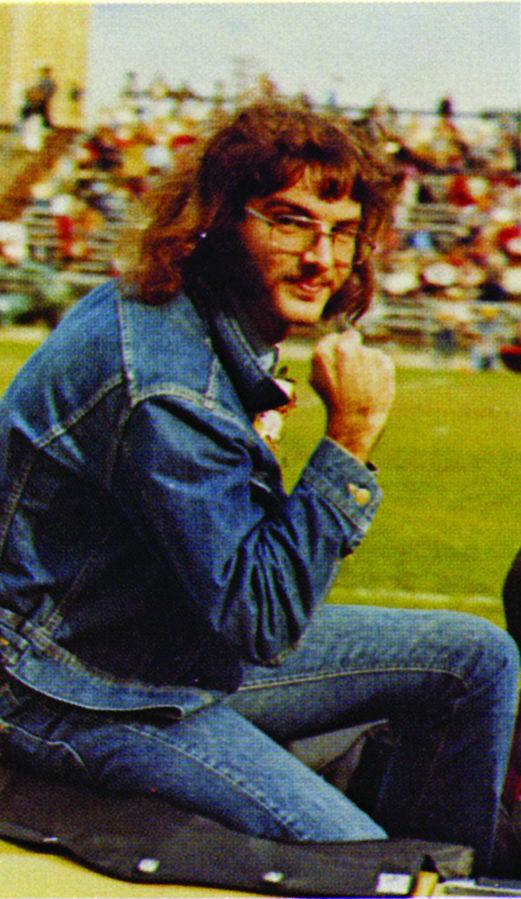The homecoming scandal of 1973
October 24, 2014
Today, elected homecoming royalty Carly Willis and Alex Crume will rightfully rule over the Washburn Review headlines. But in 1973, the post-homecoming headline that captured the attention of campus did not begin “The Winner is…”
It read “And the Loser is…”
In the 1970s, national and local newspaper headlines rang out with the news of student protests, and the Washburn campus was no exception.
By 1973, Washburn had eliminated the position of homecoming king, which had always gone to the star football player. Therefore, when George Gallion, a Benton Hall resident and freshman Political Science major from Garden City, applied and made it onto the short list of queens candidates that year, the Washburn community stood up and paid attention.
Gallion’s candidacy was only one of the issues besetting homecoming planners that year. Just a month before the big game, the Black Students Union demanded the right to crown their own queen during halftime, setting the powers-that-be scrambling.
In a report printed October 10 in the Review of a roundtable meeting with University President John Henderson, Student Council President Bernie Richstatter, and the alumni-backed Homecoming committee chair Gerald Barker, and others, BSU chairman Alonzo Harrison claimed that the club never received the information packet and registration forms to participate in queen elections. But he also felt they had no chance of winning anyway; pointing out that no black student had ever been elected to the honor in the history of Washburn homecoming.
The meeting was also important because sitting in the room was Gallion, a representative from Benton Hall. A self-proclaimed radical from youth, Gallion was responsible for changing the hair and dress code at his high school. At Washburn he found a new outlet for his activism. Gallion’s plot to enter the race for homecoming queen probably began when he heard in that “any organization could run a coed for queen,” as long as the candidate met all of the requirements. He knew he met all of them.
In 1973, requirements for queen candidates were less stringent than they are today. Hopefuls only needed a GPA of 2.0, be currently enrolled for at least 12 credit hours and had to be members of the organization that nominated them. There was no mention of gender, nor was there a category for men. Therefore, when Gallion was nominated by Benton Residence Hall, the male freshman was technically a legal candidate, and the student Homecoming Committee, one of two committees overseeing the event, allowed him on the ballot.
On October 17, Gerald Barker, Vice President of Development and chair of the University Homecoming Committee, held an emergency meeting, closed to non-committee members. Barker claimed it was in order to keep the meeting small, but students questioned his reasoning.
The administration argued that the BSU could crown their own queen anytime they wished, but honoring that queen at homecoming would require committee approval. By a vote of 8-7, the BSU request was denied. The decision over whether to disqualify Gallion was deferred to the Student Council, which was having a meeting that same night. A motion was raised in the later meeting to eliminate Gallion from the running by changing the requirements for candidacy, but president Richstatter immediately ruled the motion out of order, “since the criteria for this year’s elections had already been set.” In that decision, the student council promoted students over the wishes of alumni and the administration.
It almost worked.
Gallion and the other candidates participated throughout the week in events held before the big game on Saturday Oct. 27, 1973, although no one knew for sure if Gallion would be allowed on the field during halftime. Many viewed Gallion’s efforts as the harbinger of change for the good, while others, mostly in the administration, feared losing alumni support for homecoming events.
Gallion won the popular vote, 141-106, participated in the parade with all the other queens and donned a flower corsage pinned on him by his escort. However, Lee Dodson, Vice-president for Student Affairs, disqualified him days prior to homecoming. Ann Slover, the Zeta Tau Alpha candidate, won by default.
Dodson stated that Gallion was deemed ineligible based upon the dictionary definition of a “queen,” and in response to the voices of dissatisfied alumni and parents and planned protests announced by annoyed Greek houses.
To many students, the decision proved that the selection of Homecoming Queen was undemocratic. One opinion article asked, “Where is the University headed if money speaks more loudly than the student government?” In Gallion’s view, a student’s job in college was to question everything. He argued that college should be a community of scholars and professors backed by the administration, not ruled over by them.
By the time Gallion graduated in 1978, the University and the activities around homecoming week had slowly become what he and others had envisioned: a student-centered tradition. This year, from the Top Hat competition to the parade, from the banner competitions to the Yell Like Hell pep rally, student voices could be heard all over campus in support of all things.
The new traditions of homecoming might even make Gallion proud.
To read more about George Gallion or other past homecoming royalty, please visit the University Archives in Mabee Library.
Theresa L. Young is an adjunct History Instructor and Archives Assistant at Mabee Library



